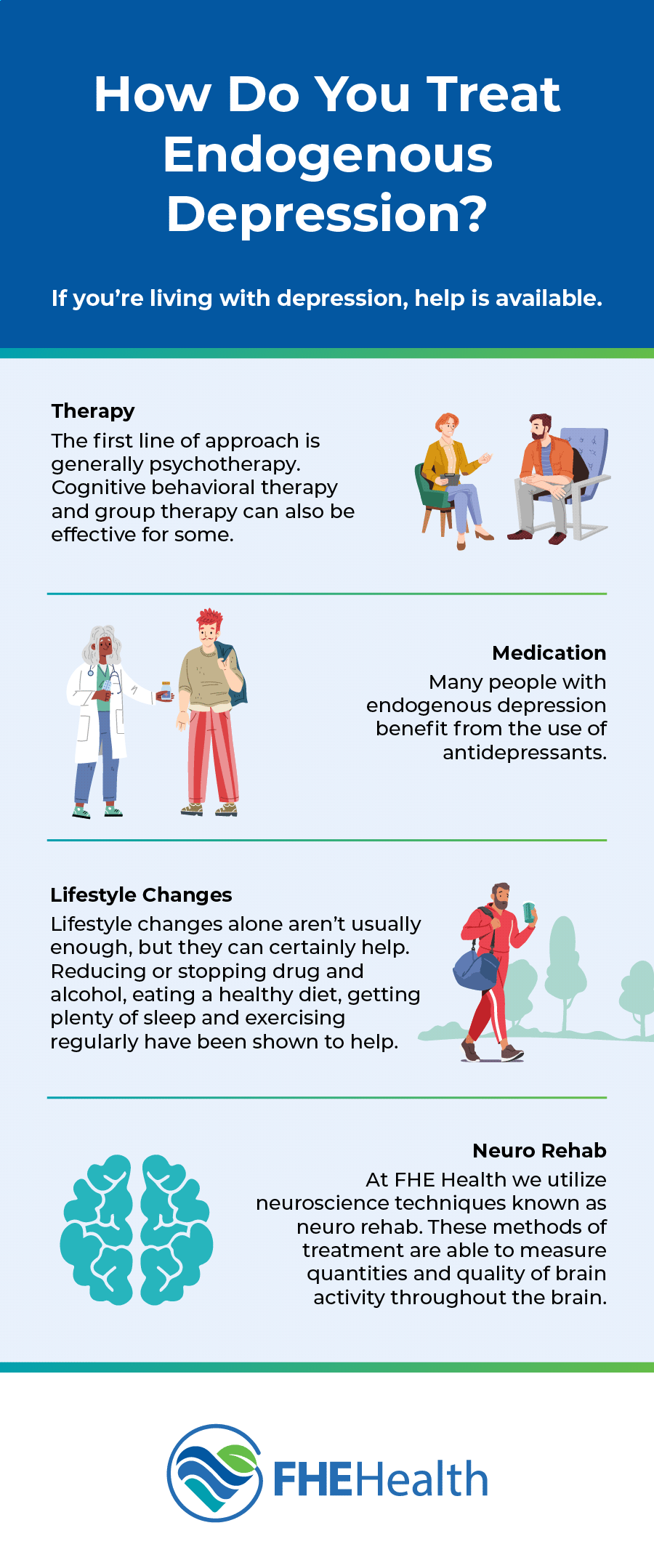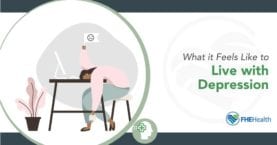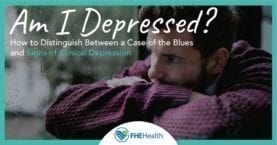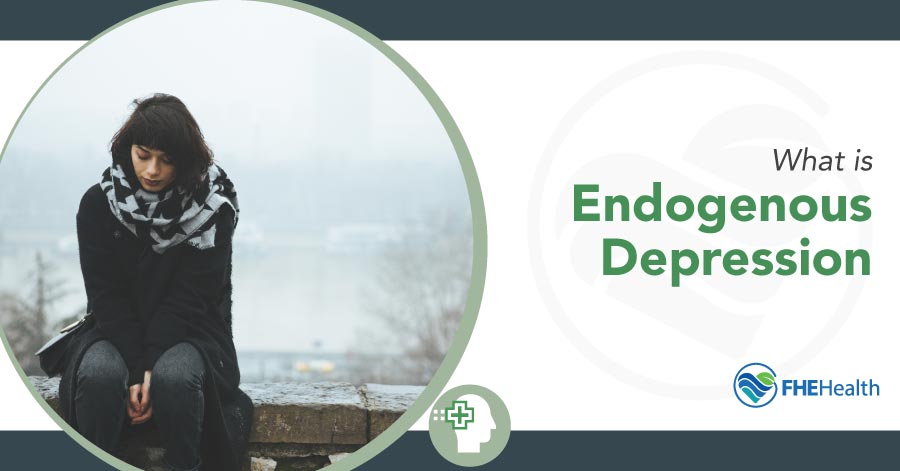
Everyone feels a little down occasionally, but sometimes those feelings don’t go away. When feelings of sadness, hopelessness or numbness persist for more than two weeks, it may become clinical depression. Consider the exogenous and endogenous definitions of depression to be more specific about the type of illness occurring.
Depression is one of the most common mental health conditions in the United States, with nearly 7% of the population suffering from it in any given year. One in six people will experience depression in their lifetime. Depression and substance abuse often go hand in hand, with many people turning to drugs or alcohol in an attempt to relieve depressive symptoms.
What Are Symptoms and Causes of Endogenous Depression?
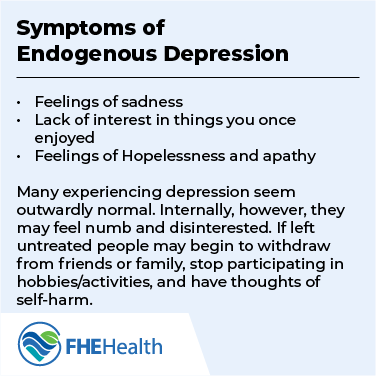 Depression is primarily characterized by feelings of sadness or lack of interest in things you once enjoyed. Those experiencing it often feel hopeless and apathetic. While most people picture someone crying and obviously sad all the time, many experiencing depression seem outwardly normal. Internally, however, they may feel numb and disinterested. In cases of depression that have been left untreated for a long period of time, people may begin to withdraw from friends or family, stop participating in hobbies and other activities, have thoughts about hurting themselves and seem almost robotic, as though they’re simply going through the motions of everyday life.
Depression is primarily characterized by feelings of sadness or lack of interest in things you once enjoyed. Those experiencing it often feel hopeless and apathetic. While most people picture someone crying and obviously sad all the time, many experiencing depression seem outwardly normal. Internally, however, they may feel numb and disinterested. In cases of depression that have been left untreated for a long period of time, people may begin to withdraw from friends or family, stop participating in hobbies and other activities, have thoughts about hurting themselves and seem almost robotic, as though they’re simply going through the motions of everyday life.
Exogenous vs. Endogenous Definition for Types of Depression
 Depression can have many causes. Many people develop it after a traumatic event or major life change, such as a divorce or the death of a loved one. In the past, this was called exogenous depression or non-endogenous depression, meaning it was caused by an outside event. It’s important to note that exogenous depression isn’t the same as grief. Everyone feels sad and stressed after a major loss, but normal grief or stress involves periods of relief and happiness that increase over time. Depression is persistent and doesn’t show signs of improvement.
Depression can have many causes. Many people develop it after a traumatic event or major life change, such as a divorce or the death of a loved one. In the past, this was called exogenous depression or non-endogenous depression, meaning it was caused by an outside event. It’s important to note that exogenous depression isn’t the same as grief. Everyone feels sad and stressed after a major loss, but normal grief or stress involves periods of relief and happiness that increase over time. Depression is persistent and doesn’t show signs of improvement.
There are also some people who experience depression that occurs for no apparent reason. You can define endogenous depression as depression that comes from within. Endogenous depression is just as real as exogenous depression, although some people struggle to accept it because they feel they have to have a reason to be depressed.
Major Depressive Disorder
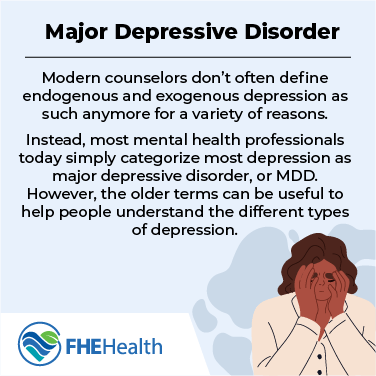 Modern counselors don’t often define endogenous and exogenous depression as such anymore for a variety of reasons. The distinction between the two types isn’t always clear, and the treatments are largely the same.
Modern counselors don’t often define endogenous and exogenous depression as such anymore for a variety of reasons. The distinction between the two types isn’t always clear, and the treatments are largely the same.
Instead, most mental health professionals today simply categorize most depression as major depressive disorder, or MDD. However, the older terms can be useful to help people understand the different types of depression.
What Causes Endogenous Depression?
Endogenous depression doesn’t have an external trigger, but there are often identifiable causes for it. One of the most common is simply personality traits, such as low self-esteem and a negative view of life. These can make it harder to deal with normal stresses, which build up over time and lead to depression.
Genetics and lifestyle can also play a role. Although it’s still being studied, research has shown that major depressive disorder and other mental illnesses often run in families, suggesting a genetic link. Depression is also linked to differences in brain chemistry.
Living in unhealthy, stressful or dangerous environments also often leads to depression, even if you can’t point to a single event that triggered it. Exposure to abuse is a common factor, whether or not you’re the person being abused. People who live in poverty are also at significant risk of depression.
How Do You Treat Endogenous Depression?
If you’re living with depression, help is available. A treatment plan needs to be tailored to the individual, but it’s generally effective for even the most severe cases. Several common forms of depression treatment have been shown to be effective.
Therapy
The first line of approach is generally psychotherapy. There are numerous approaches, and it can take some experimentation to find the right one for you. One of the most common and effective techniques is cognitive behavioral therapy, which is aimed at identifying negative and unhealthy thought patterns and training yourself to replace them with healthier ones. Other types are designed to help people work through traumas or develop healthy coping strategies. Many therapists use a combination of techniques.
For some individuals, group therapy is the most effective setting, reducing their feelings of isolation and feeling like they’re the only ones to have these emotions and difficulties. For others, individual therapy is more beneficial, since opening up about the very intimate feelings depression causes can be difficult in front of relative strangers.
Medication
Many people with endogenous depression benefit from the use of antidepressants. These drugs work by subtly changing your brain chemistry, which can help you feel happier and more capable. Antidepressants don’t create a buzz or high and aren’t habit-forming, so they’re generally safe for people in recovery. They usually take 2 to 4 weeks to become effective, and most people take them for 6 months or more.
Antidepressants work slightly differently on each individual, so it’s important to let your doctor know if you’re experiencing significant side effects or aren’t seeing any benefits. Your doctor may want you to try a different type.
Lifestyle Changes
While simple lifestyle changes alone aren’t usually enough to cure endogenous depression, they can certainly help. Reducing or stopping drug and alcohol use is often a key factor in treating depression. Eating a healthy diet, getting plenty of sleep and exercising regularly have also been shown to help.
Longer-term lifestyle changes include removing external stressors, such as finding a better job or a more secure living situation. Developing a good, supportive social network also helps.
Neuro Rehab
At FHE Health we utilize neuroscience techniques known as neuro rehab. These methods of treatment are able to measure quantities and quality of brain activity throughout the brain. Using this information, we can set a benchmark for a person’s brain function before treatment has begun. Furthermore, we can utilize this technology to stimulate those areas and use therapeutic techniques to encourage neural pathway functionality.
Healing From Depression
If you or a family member is living with exogenous (non-endogenous) or endogenous depression, help is available. With a holistic approach that includes substance abuse treatment, therapy and medications, you can recover from depression and live a happier, healthier life. If you’re seeking medical advice, contact FHE Health today to learn more about your options for treatment and recovery. Our team of compassionate counselors is available 24 hours a day to take your call.
